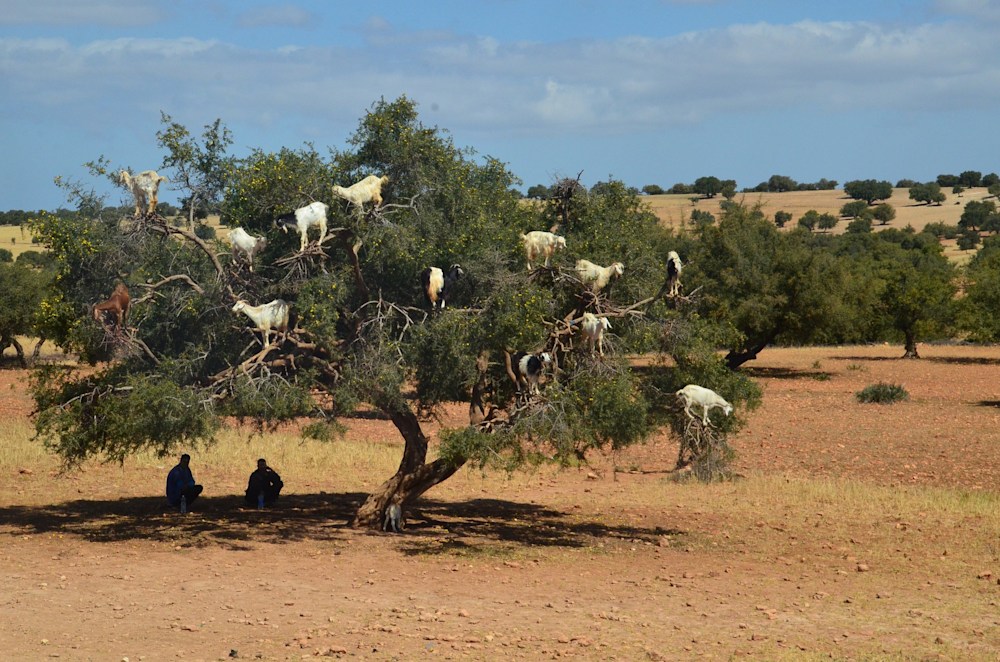Your shopping cart is empty.

Feb 12, 2020
By Alana Judah
Beneath the Old Goat Tree - click to order prints
Don't let this painting get your goat. It isn't fantasy. There are actual goats that climb trees and it's a pretty common occurrence in the semi-deserts of southwest Morocco.
This eye-catching phenomenon occurs in argan trees, thorny trees with a gnarled trunk native to southwestern Morocco and a small section of western Algeria.

Argan trees produce a fruit that attracts goats up onto their branches. The trees generally grow to be between 26 and 33 feet tall and these quirky little goats have no qualms about scampering out on branches, 30 feet off the ground, in search of the bitter fruit.
An argan fruit looks like a shriveled golden apple and some people say it has an aroma like one. The fruit is firm, has a thick peel, and contains a bitter fleshy pulp around an almond-shaped nut that resembles a dried olive.

That pulp is what the goats love but they eat the whole fruit, despite the fact that their bodies can't digest the nut. So what becomes on the nut?
Argan nuts pass through the digestive system of a tree goat whole. Once they are (a-hem) excreted, people gather them from under the tree and crack them open to expose the seeds inside.
Argan nuts contain anywhere from 1 to 3 oil-rich kernels. These kernels are then roasted, ground, mashed or cold-pressed to produce argan oil, one of the most highly sought after culinary and cosmetic liquids in the world.

At Sephora, a 1.7oz bottle of argan oil goes for $48. Is has nearly 6000 reviews and they are primarily favorable. Translation: tree goat stock is on the rise.
Now you know what's beneath the old goat tree.
www.cbsnews.com/pictures/tree-goats-of-morocco-argan-oil
A speical thanks to photographer Arne F www.instagram.com/arnefos
This is only visible to you because you are logged in and are authorized to manage this website. This message is not visible to other website visitors.
This means you can use the camera on your phone or tablet and superimpose any piece of art onto a wall inside of your home or business.
To use this feature, Just look for the "Live Preview AR" button when viewing any piece of art on this website!
This means you can use the camera on your phone or tablet and superimpose any piece of art onto a wall inside of your home or business.
To use this feature, Just look for the "Live Preview AR" button when viewing any piece of art on this website!

SAVE 20% ON YOUR FIRST ORDER!
Enter your email below and we'll email you a 20% OFF Coupon right now!
This offer is valid for NEW CUSTOMERS only!